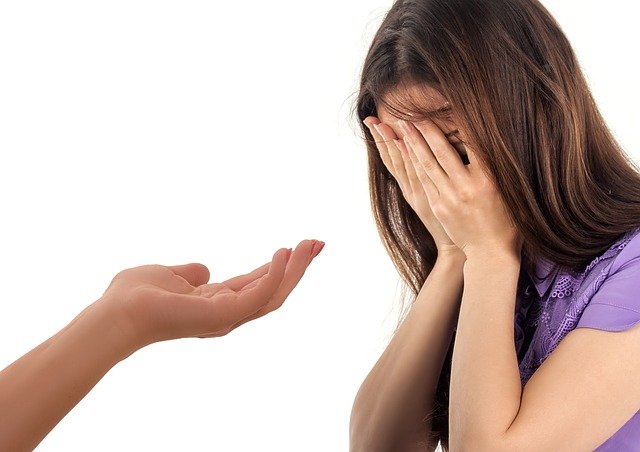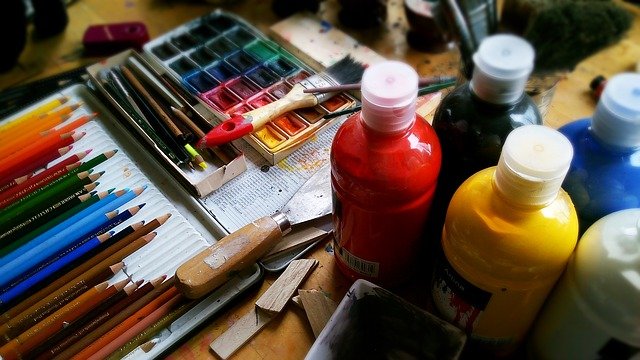Package of 5 Sessions
- Rs.5,999.00/-
Art therapy involves the use of creative techniques such as drawing, painting, collage, photography, textiles, or sculpting to help people express themselves artistically and examine the psychological and emotional undertones in their art. In this therapy individuals use creative expression to produce various types of media, which helps them explore their innermost emotions and thoughts, reconcile conflicts, manage stress and anxiety, develop self-awareness, manage addiction and self-deprecating behaviours, and increase their sense of self-esteem.
 Tanushree Pasricha
Tanushree Pasricha  14 Mar 2020
14 Mar 2020  Psychotherapy
Psychotherapy  3.5k Reads
3.5k Reads  9 min Read
9 min Read 
Art therapy involves the use of creative techniques such as drawing, painting, collage, photography, textiles, or sculpting to help people express themselves artistically and examine the psychological and emotional undertones in their art. With the guidance of a credentialed art therapist, clients can "decode" the nonverbal messages, symbols, and metaphors often found in these art forms, which should lead to a better understanding of their feelings and behavior so they can move on to resolve deeper issues.
This therapy integrates psychotherapeutic techniques with the creative process to improve mental health and well-being. As clients create art, they may analyze what they have made and how it makes them feel. Through exploring their art, people can look for themes and conflicts that may be affecting their thoughts, emotions, and behaviors. In this therapy, individuals use creative expression to produce various types of media, which helps them explore their innermost emotions and thoughts, reconcile conflicts, manage stress and anxiety, develop self-awareness, manage addiction, and self-deprecating behaviors, and increase their sense of self-esteem.
People do not need to have artistic ability or special talent to participate in art therapy, and people of all ages including children, teens, and adults can benefit from it. This therapy is also known as expressive therapy. This sort of therapy uses art as a means of communication and lets people express and explore their thoughts and emotions. You do not even need to be very artistic or creatively talented to take part in this therapy. The goal of art therapy is to utilize the creative process to help people explore self-expression and, in doing so, find new ways to gain personal insight and develop new coping skills.

Art therapy can be used to treat a wide range of mental disorders and psychological distress. In many cases, it might be used in conjunction with other psychotherapy techniques such as group therapy or cognitive-behavioral therapy.
Some situations in which art therapy might be utilized include:
Some conditions that art therapy may be used to treat include:
Here are the types of art therapies that you could choose from.

This art therapy technique is probably almost limitless. Painting can give you a great sense of freedom, being able to paint whatever you want. Your therapist can make this a little easier for you by assigning exercises and prompts on what you can base your drawing on. You will have a blank canvas to work on, with so many possibilities. For example, you can explore your emotions and draw whatever comes to your mind, expressing your emotions and your creative side.

Collaging is where you cut and stick pictures that inspire you or express your emotions and put them all together. This can really give you a great sense of freedom and can help you to explore your creative side without having to paint or draw. It is your own personal art, but collecting other pictures that best express how you feel. Collaging is also very similar to making a vision board, which is where you make a collage of your dream life and goals. Be sure to get your free visualization toolkit, which contains an ultimate guide to using a dream board

As times are changing now, we need new techniques to keep up with it. Digital art is where you use the computer to make your art. This could be electronically designing a collage or using drawing software to make your illustrations. This has been said to help children, who are used to computers and phones, and made expressing their art easier for them. It also helps that the possibilities are almost endless when using digital software too, helping you express your emotions even further.
Photoimaging software. Instead of cutting and pasting magazine and book images and pasting them into a paper collage, digital arts programs allow users to do the same electronically. There are literally millions of images available online for these projects.
Drawing software. Some therapists argue that the sensory benefits of creating are excluded using computers, yet others cite cases of younger generations preferring to draw digitally and more intuitively than with pencils or paintbrushes.
For those who maybe are not as keen on drawing and painting as others, photography can be a great outlet. Most smartphones have up-to-date, HD cameras built-in! Make use of the technology you have or research into investing in a more professional camera. You can take pictures of so many different things, such as, things you are thankful for, people who you love, or just things that you find beautiful and pleasing. Combine this idea with collaging! Print out your photographs and use them on your vision board. Again, your art therapist can help you figure out which photography could be best for you.
Using textiles in art therapy can be when you either use them as toys and puppets or if you have physical difficulties with using art suppliers due to motor skills, for example. Using textiles can also offer softness which can help to provide comfort for you. This can be a great way to express yourself whilst not worrying about physically having to use pen and paper.
The drawing technique involves a patient using an item for easy mark marking. Supplies used in the drawing include charcoal, pastels, pens, pencils, crayons, and paper-based substrates. Most clients are conversant with drawing supplies and they can use them with very little frustration or instruction. This form of therapy does not require any drawing skills as it is not intended for producing artwork, but for helping the patient to explore their emotional aspects through creative art.
Clay or other types of sculpting materials traditionally have been used by art therapists, It involves having the client sculpt or represent important figures of his/her life. They don't even have to look like people, the only representation of important figures. These representations reflect personalities, such as a large figure symbolizing an overbearing mother or father. The client also places the figures about each other, showing the therapist, symbolically, the relationships and patterns of interactions of each figure. This gives both the client and the therapist a better understanding of how each figure's structure and patterns have affected the client and perhaps contributed to a client's current issues and problems.
Art therapists know that certain situations and personalities will require certain media - such as oil pastels. For example, it takes a longer period of time to cover a large surface with oil pastels - longer than paint. This is important as time allows some clients to discuss their feelings as they create.
Oil pastels also provide a sensory experience, the fingers, for example, directly on the oil pastel stick that marks the paper, rather than holding a brush that holds the paint - that marks the surface. More intense sensory experiences, such as using soft or oil pastels or clay, provide a way to calm and settle agitated patients.
However, clients who are not agitated but like mixing colors and creating textures might prefer paints or mixed media techniques. Others prefer simply drawing with charcoal or graphite, perhaps those who have had some drawing experience in the past or don't want to think about making color choices. Still others, especially autistic children, may prefer drawing on a computer.
Paints, oil and soft pastels, markers or other drawing tools, and clay give art therapists a solid toolbox for various therapeutic interventions, but there are many other tools that therapists use, such as tissue art, fiber arts, beadwork, and mask making.

_1764218486.jpg)

Finding the most effective addiction counselor can be one of the most cruci...
 27 Nov 2025
27 Nov 2025  9 min Read
9 min Read 71 Reads
71 Reads _1763794440.jpg)

Addiction can take over your the daily routine, whether it's smoking, a...
 22 Nov 2025
22 Nov 2025  9 min Read
9 min Read 136 Reads
136 Reads _1763618244.jpg)

Recovery from addiction isn't one-time event; it's a process that d...
 20 Nov 2025
20 Nov 2025  9 min Read
9 min Read 166 Reads
166 Reads _1763444447.jpg)

Sometimes late at night, when the house is finally quiet you catch yourself...
 19 Nov 2025
19 Nov 2025  9 min Read
9 min Read 183 Reads
183 Reads 
_1764218486.jpg)
_1763794440.jpg)
_1763618244.jpg)
_1764218486.jpg)
_1763794440.jpg)
_1763618244.jpg)
_1763444447.jpg)